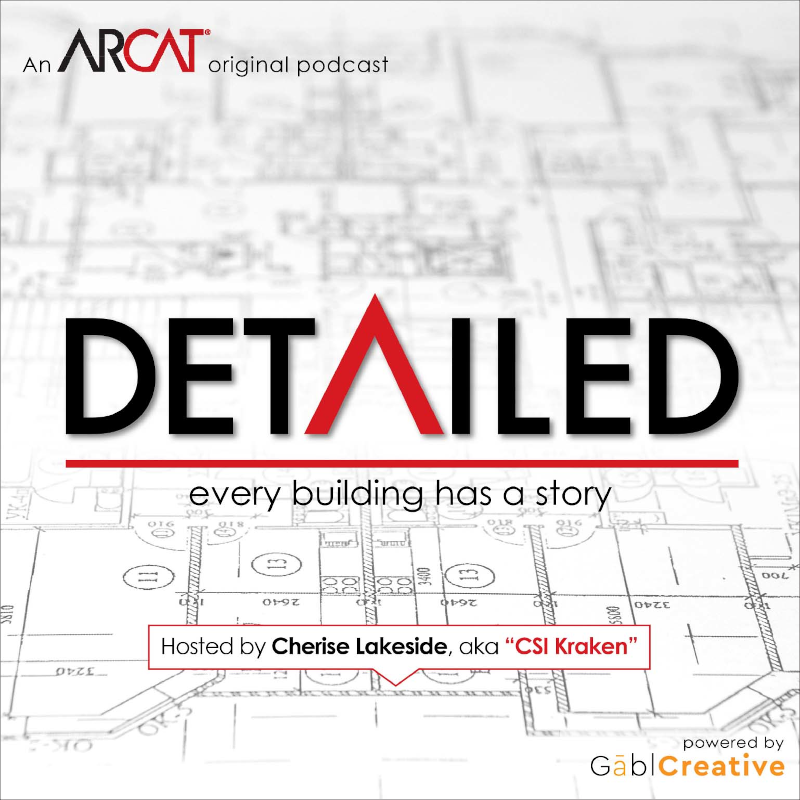|
Contributed by Eric D. Lussier As I stated on the Young Architect podcast with Michael Riscica back in October, “Let’s Fix Construction is not about Cherise and I; it’s about the industry. It’s about taking good pieces of knowledge and information and sharing it with the world.”
Over the last eighteen months, we have done our absolute best to bring our voices, as well as two dozen additional contributors from across the AEC industry, and provide an avenue to offer creative solutions, separate myths from facts and erase misconceptions about the architecture, engineering and construction (AEC) industry. We continue to look to add to our collective voice on this blog and our podcast and encourage you to share your voice. We offer a platform, an audience and a desire to share your knowledge with others. This outlet is free, and we encourage you to speak out and let your view be known. Please visit the submit page on our website to learn more. Another AEC-based website offering knowledge sharing is Construction Marketing Ideas (CMI), which shares free information and resources for architectural, engineering and construction businesses. Mark Buckshon, the founder of CMI, set out to learn everything he could about marketing for AEC and share it with the rest of the industry. Annually, CMI holds a competition for the Best Construction Blog of the year. In Let’s Fix Construction’s first year, we were nominated (you can read our profile from 2017 on the CMI blog here) and we’re very happy to announce that as we celebrate our 18-month anniversary, we are once again nominated in 2018, among a field of 17 industry bloggers. From now until Saturday, March 31st you can vote for your favorite AEC industry bloggers. We are truly honored to be nominated among many other industry voices and well-respected blogs and encourage you to read all of them out for a wealth of education and knowledge, including one of Let’s Fix Construction’s most frequent and esteemed contributors, Mr. Sheldon Wolfe, whose 'Constructive Thoughts' is also nominated. Please consider taking the time to vote for ‘Let’s Fix Construction’ and ‘Constructive Thoughts’ on the CMI website (as you can select one or more blogs on the ballot, but can only vote once), which you may do here: http://constructionmarketingideas.com/best-construction-blog-2018-voting-booth/
0 Comments
Contributed by Eric D. Lussier Eighteen months ago, a random conversation on a Tuesday afternoon between Cherise Lakeside and myself went like this: Me: "Seemingly few are committed to speak their mind or try to fix the broken system that is construction. You do a damn fine job of breaking that mold and trying to help this industry." Cherise: "Thank you. The key, I think, is speaking your mind in a productive and positive way with some solutions in hand. Everyone just wants to be negative and bitch about things. I try to only stir the pots that need stirring." Me: "You are so right. A problem is everyone acts like their own island and the destination rescue is each their own issue and not working together on being rescued. I pretty much just 'Survivored' the construction industry." Cherise: "Ha, ha! Exactly. We need to pull people out of their comfort zones and make them open their eyes. This is way too much of a "me" society as it is." Me: "So, perhaps a member from each seat at the table who can feature their respective perception and potential solutions. We can register a domain like letsfixconstruction.com" That's the truth. I have the actual conversation and those are exact quotes. It struck me this past Friday, February 16th, that Let's Fix Construction was a year & a half old. If you had told me eighteen months ago what the last 550 days were going to be like, I would have laughed out loud.
As a way to look back on these first months of Let's Fix Construction, we're going to take the next week to share and revisit every article that we've posted along the way, starting at number one. We'll be sharing these posts on social media. Please follow us on Twitter, Facebook, LinkedIn and Instagram. We've gained dozens of contributors, thousands of readers and now listeners, thanks to the Let's Fix Construction podcast, and didn't want to lose sight at what we started with and shared in the last year and a half. As always, if you would like to share your knowledge and contribute a forward-thinking concept to a construction-related issue, dispel a myth or just provide a solution for a better built environment, please contact us and let us know. And without further ado, our very first post on the Let's Fix Construction blog, written by yours truly, 'The Fifth C of CSI: Collaboration' Contributed by Marvin Kemp Anyone who knows me well knows a couple of things about me: I love practicing architecture, I have a deep commitment to making our industry better and I feel that only through collaboration and inclusion can we make our industry better. I live in a suburb of Baltimore, MD, but our office is downtown on Pratt Street in the Inner Harbor area. I drive through neighborhoods of poverty and blight on my commute to and from work most days. I have no experiences in my life to compare with what these neighbors go through every day. I watch and read the news daily and it seems that we are failing much of our inner city. And not just Baltimore, but most cities in the U.S. My parents live outside of Dallas and we talk about the same issues facing the folks who live in the impoverished areas of that city. I see it on our job sites and I discuss with others in the industry: we cannot get enough people to come into construction as skilled or unskilled workers. I don't know what the reasons are, but there seem to be some barriers to entry. I also see something else: a gender gap. Our office has 92 people and 38 are women. There clearly is no shortage of women interested in studying architecture, landscape architecture and urban planning. When I was studying architecture in the late 1980's, we still had professors who felt that women did not belong in our profession and actively attempted to fail them. We've come a long way, but more work is needed in design professions, especially ensuring both genders have leadership opportunities. But, when was the last time you saw a woman working on a construction site? I occasionally run across a plumber or electrician who is female, but they are so few and far between, it seems incredible. That's not to mention the harassment, chauvinism and pay inequity that these women experience when they actually start working. I see the graffiti on our job sites, so I can only imagine what women see, hear and feel if they step on those sites. I think we need to start a dialogue on these issues and I know some already are having conversations." We also need to remove as many barriers to entry into construction as we can. Part of that effort is taking place in the Lehigh Valley of Pennsylvania with a program started by the Greater Lehigh Valley Chapter of CSI called "Let's Build Construction Camp For Girls." This is a program for high school age girls in the Greater Lehigh Valley to attend a free camp to learn about the building trades. Check out GLV CSI's web-site for information on the camp, which includes their 2018 session from July 9th to the 13th.
Its inaugural year was in 2017 and was a huge success. There are other CSI chapters considering starting a similar program to help break down some of those barriers to entry into the construction industry. What else can we do? (Editor's Note: You can read the introductory blog post on the 'Let's Build Construction Camp For Girls' from the Greater Lehigh Valley Chapter of CSI's President, Jon Lattin, on the Let's Fix Construction site here, as well as a follow-up on the Camp here.) Contributed by Randy Nishimura Unless you’ve been living under a rock lately, you’re probably aware of the growing interest in and use of mass timber as a construction system in increasingly significant (larger and taller) buildings. I wrote previously following a tour last year of a CLT plant in Riddle, OR, architects are quickly latching onto mass timber because of its sustainable attributes. Mass timber structural products can outperform steel and concrete, whether the metric used is embodied energy or the amount of air and water pollution produced during their extraction and processing. Additionally, wood products sequester carbon and are derived from renewable resources.
Despite the greater awareness and appeal of mass timber as a viable alternative to steel and concrete for primary structural systems in larger buildings, its use remains a challenge because current building codes have been slow to recognize its inherent fire-resistive properties, resilience, and ability to be assembled by means capable of resisting seismic forces comparable to steel or concrete alternatives. A recent CSI-Willamette Valley Chapter meeting was a real treat, as Eric McDonnell, a structural engineer and associate with KPFF, built a solid case in favor of mass timber construction systems. As someone who’s been at the forefront of the development of emerging industry standards for CLT use, Eric was eminently qualified to deliver a technically comprehensive, yet concise, primer on the topic to our audience. Eric originally joined the KPFF San Francisco office in 2005, but left in 2010 to respond to a strong need in New Zealand for structural engineers capable of completing damage assessments and helping with the rebuilding process following the Canterbury Region earthquakes. He rejoined KPFF after two years of work in Christchurch, relocating to the firm’s Portland office. Eric’s experience in Christchurch proved invaluable, as the damage wrought by the massive earthquakes served as a real-world laboratory for him and other structural engineers. Eric could see firsthand how the buildings there—designed and constructed in a similar fashion to those here in the U.S.—had performed. The vast majority of buildings engineered to meet modern codes did achieve their life safety performance objective; however, the central business district was cordoned off for two years and more than 1,000 buildings ultimately were demolished because the cost to repair them was too great. In that aftermath, public entities, engineers, and the general public began to ask whether it was reasonable to expect better outcomes in the wake of a seismic event. The notion of low-damage or resilient design took off in earnest. |
AboutLet's Fix Construction is an avenue to offer creative solutions, separate myths from facts and erase misconceptions about the architecture, engineering and construction (AEC) industry. Check out Cherise's latest podcast
Get blog post notifications hereArchives
March 2022
Categories
All
|





 RSS Feed
RSS Feed
